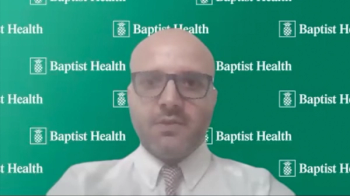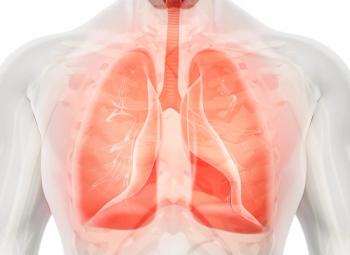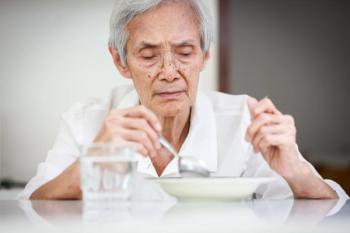
Safety, Efficacy Noted With Daratumumab Plus Ixazomib Quadruplet as Induction, Consolidation for Standard-Risk Myeloma
Induction and consolidation with daratumumab, ixazomib, lenalidomide, and dexamethasone was able to induce minimal residual disease in a subset of patients with transplant-eligible newly diagnosed multiple myeloma and standard-risk disease.
Daratumumab (Darzalex) plus ixazomib (Ninlaro), lenalidomide (Revlimid), and dexamethasone (Dara-IRd) as extended induction and consolidation therapy in standard-risk, transplant-eligible newly diagnosed multiple myeloma resulted in deepening rates of minimal residual disease (MRD), according to phase 2 results from the IFM 2018-01 trial (NCT03669445) presented at the 2021 ASH Annual Meeting.
MRD negativity specific to 10-6 as determined by next-generation sequencing was achieved by 39.5% (95% CI, 26.1%-54.1%) of patients after treatment with Dara-IRd as extended induction and consolidation following autologous stem cell transplantation (ASCT). The 2-year progression-free survival (PFS) rate was 93.3% (95% CI, 80.7%-97.8%) and 100% of remained alive at the assessment. These rates were lower than observed with other quadruplet regimens for standard-risk multiple myeloma, said lead investigator Aurore Perrot, MD, PhD.
“Dara-IRd as extended induction prior to and as consolidation following transplant was safe and allows gradually deepening responses in standard-risk newly diagnosed multiple myeloma,” said Perrot, of the the Centre Hospitalier Universitaire de Toulouse, Service d'Hématologie, Toulouse, France. “However, MRD-negativity rates are lower, especially at the post induction assessment, than those obtained with Dara-VTd [daratumumab, bortezomib, thalidomide, and dexamethasone] and Dara-KRd [daratumumab, carfilzomib, lenalidomide, and dexamethasone], which should be preferred in MRD-adapted strategies in a view to cure patients in transplant setting.”
There were 45 patients enrolled to receive Dara-IRd, with 43 receiving ASCT and 42 getting consolidation. Maintenance therapy with single-agent lenalidomide was administered to 37 patients and remained ongoing at the time of the analysis. The main causes of study discontinuation were progressive disease (n = 3), adverse events (AEs; n = 2), and patients' decision (n = 3).
In cycles 1 to 6 of induction ixazomib was given at 3 mg on days 1, 4, 8, and 11, lenalidomide was administered at 25 mg daily for days 1 to 14, dexamethasone was dosed at 40 mg on days 1, 8, and 15 and daratumumab was administered at 16 mg/kg on days 1, 8, and 15 in cycles 1 to 4 and on days 1 and 15 for cycles 5 and 6. Cell mobilization for ASCT was achieved with intravenous cyclophosphamide at 3 g/m2 along with G-CSF at 10 μg/kg per day. Melphalan at 200 mg/m2 was given 2 days prior to infusion of stem cells and pegylated G-CSF was given 2 days after.
For consolidation, the dose for ixazomib was increased to 4 mg on days 1, 8, and 15. Lenalidomide was given at 25 mg daily from day 1 to 21 and dexamethasone was given at 20 mg on days 1, 8, 15, and 22 for cycles 7 and 8 and on days 1 and 15 for cycles 9 and 10. Daratumumab was administered at 16 mg/kg on days 1 and 15. After 10 total cycles of induction and consolidation, patients were moved to maintenance lenalidomide alone at 10 mg daily on days 1 to 21 for up to 2 years or until progression.
The median age of patients enrolled in the study was 57 years (range, 28-65) and 35.6% were at least 60 years old. Two-thirds of patients were male (66.7%) and International Staging System stages were balanced between stage I (40.9%), II (38.6%), and III (20.5%). There were no patients enrolled with high-risk cytogenetics by fluorescence in situ hybridization, and the most common ECOG performance status was 0 (55.6%). Hemoglobin was less than 10 g/dL for 22.2% of patients.
The post-consolidation objective response rate (ORR) by International Myeloma Working Group (IMWG) criteria was 97.7%. The very good partial response (VGPR) or better rate was 95.3% and the complete response (CR) or stringent CR rate was 32.6%. Following induction alone, the ORR was 97.6%, the VGPR or better was 78.0%, and CR/sCR was 14.6%. After ASCT, the ORR was 97.7%, the VGPR or better was 90.0%, and the CR/sCR was 25.0%. After 1 year of maintenance, the ORR was 95.2%, the VGPR or better was 92.8%, and the CR/sCR was 54.7%.
Although MRD at 10-6 was the primary end point, MRD at the IMWG threshold of 10-5 was also assessed for the study. By this criteria, MRD-negativity following consolidation and before maintenance was achieved by 51.4% of patients (95% CI, 36.8%-65.7%). Following induction alone, the MRD negativity rate by 10-5 was 28.1% and was 6.3% by the 10-6 criteria. Following ASCT the rate of MRD negativity by 10-5 was 34.4% and was 29.0% by 10-6. After 1 year of maintenance, the MRD-negativity rate was 51.3% by the 10-5 criteria and was 30.3% by the 10-6 definition.
The most frequently observed grade 3/4 AEs were neutropenia (31.1%), thrombocytopenia (11.1%), respiratory tract infections (8.8%), and gastrointestinal disorders (6.7%). Adverse events of any grade included gastrointestinal disorders (66.7%), respiratory tract infection (62.2%), peripheral sensory neuropathy (37.8%), and rash (28.9%). There was 1 case of a secondary primary malignancy detected, which was myelodysplastic syndrome.
“Due to its very safe profile, Dara-IRd might be used for standard-risk multiple myeloma patients with neurological or cardiovascular comorbidities,” Perrot noted.
Reference
Perrot A, Lauwers-Cances V, Touzeau C, et al. Daratumumab plus ixazomib, lenalidomide, and dexamethasone as extended induction and consolidation followed by lenalidomide maintenance in standard-risk transplant-eligible newly diagnosed multiple myeloma (NDMM) patients (IFM 2018-01): a phase II study of the Intergroupe Francophone Du Myélome (IFM). Presented at: 2021 ASH Annual Meeting and Exposition; December 11-14, 2021; Atlanta, GA. Abstract 464.
Newsletter
Stay up to date on recent advances in the multidisciplinary approach to cancer.



















































































